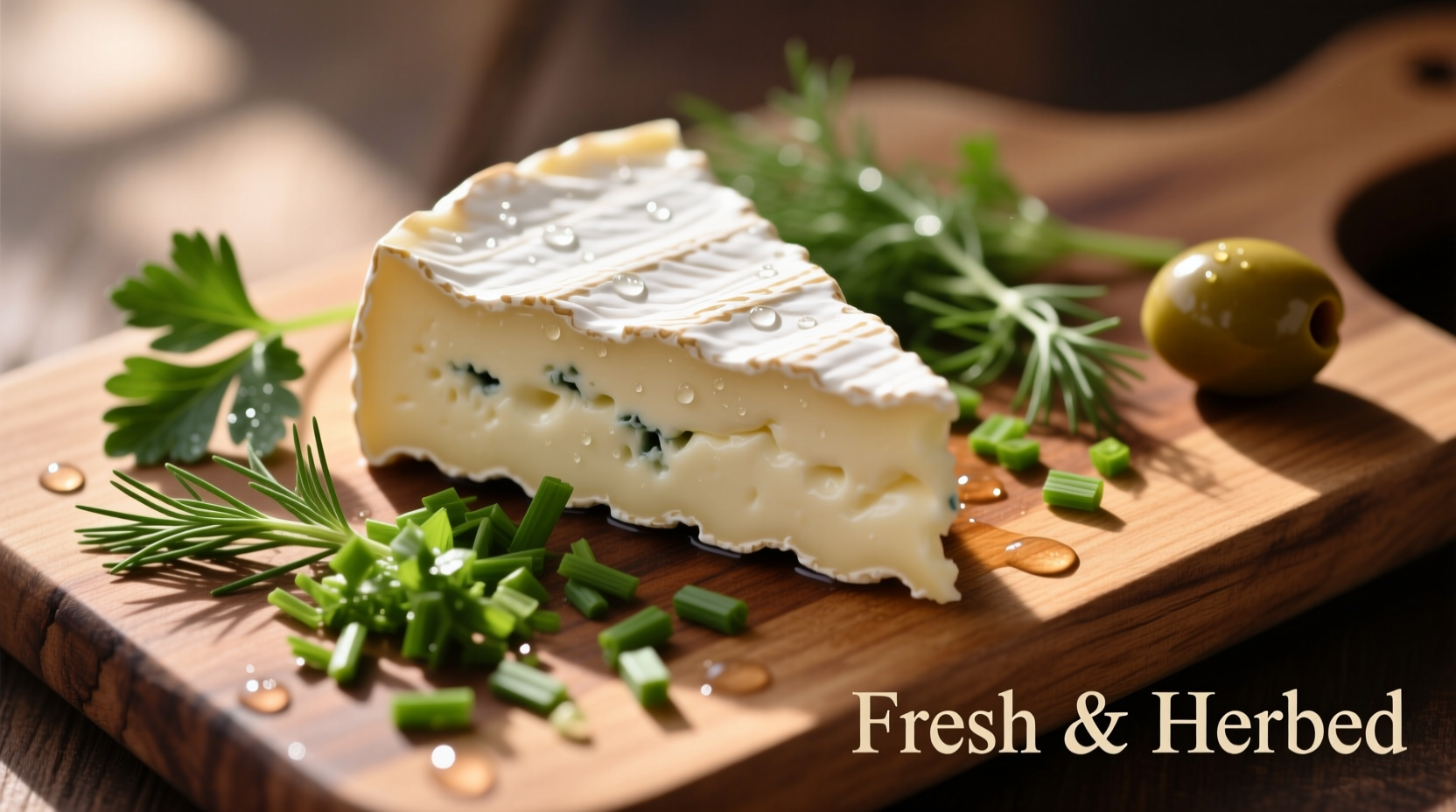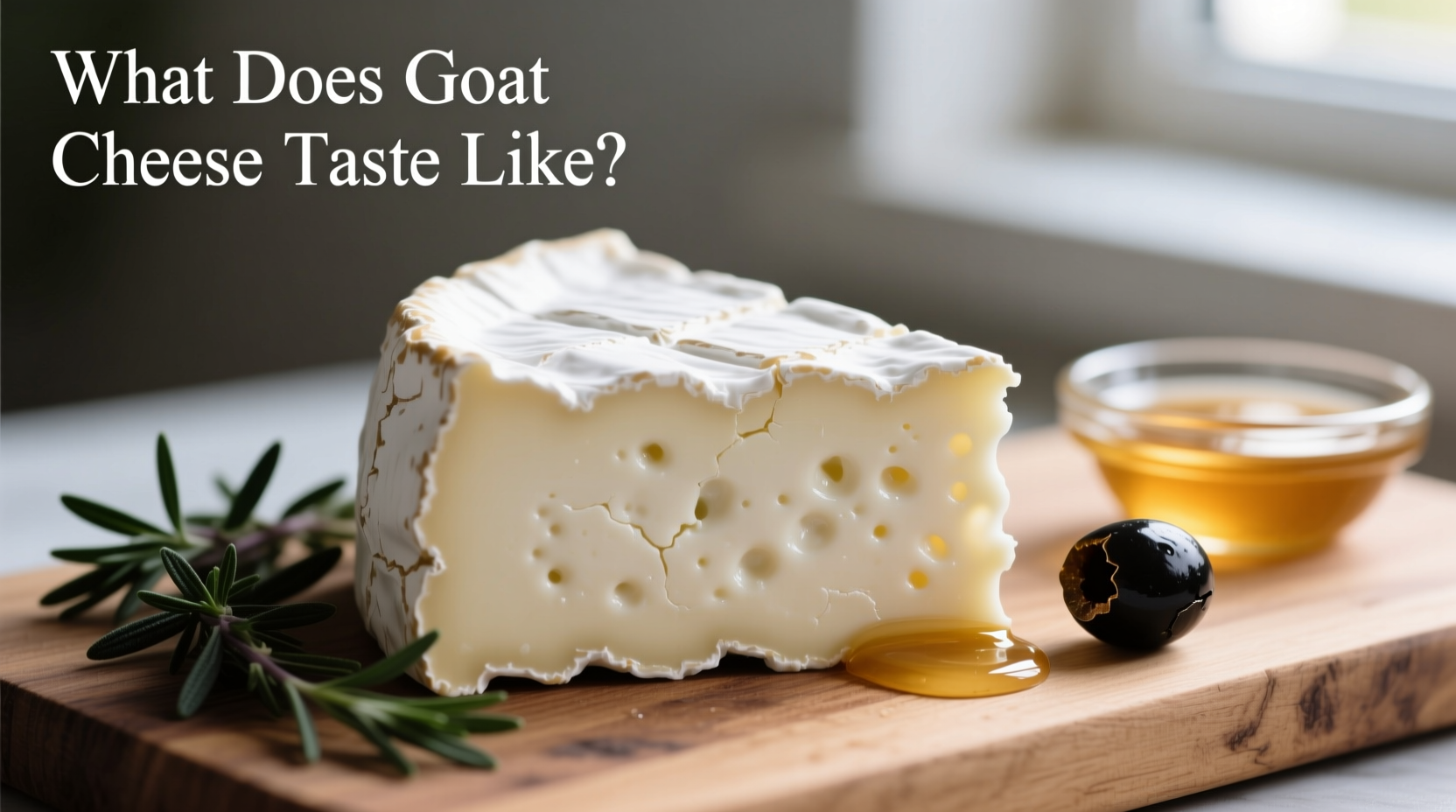Decoding the Unique Flavor Profile of Goat Cheese
When you ask what does goat cheese taste like, you're exploring one of dairy's most distinctive flavors. Unlike cow's milk cheese, goat cheese delivers a bright, refreshing taste experience that food enthusiasts describe using specific flavor notes:
- Tangy acidity - A pleasant sharpness that awakens the palate
- Earthy undertones - Subtle grassy, herbal notes reflecting the goats' diet
- Creamy texture - Ranges from spreadable fresh cheese to firm aged varieties
- Subtle sweetness - Especially noticeable in younger cheeses
- Mineral notes - A clean finish reminiscent of fresh mountain air
These characteristics combine to create what food scientists call a "brighter" dairy experience compared to cow's milk cheeses. The distinctive flavor comes primarily from caproic, caprylic, and capric acids naturally present in goat's milk—compounds that give goat cheese its signature profile without any actual "goat" flavor.

How Age Transforms Goat Cheese Flavor
Understanding what goat cheese tastes like requires recognizing how dramatically aging affects its flavor profile. Unlike some cheeses that develop more intense saltiness, goat cheese undergoes a fascinating flavor evolution:
| Age Category | Texture | Flavor Profile | Best Uses |
|---|---|---|---|
| Fresh (0-2 weeks) | Soft, spreadable | Mild tang, subtle sweetness, fresh milk notes | Salads, spreads, desserts |
| Semi-aged (2-8 weeks) | Firmer, sliceable | Noticeable tang, earthy notes, creamy mouthfeel | Sandwiches, tarts, roasted vegetables |
| Aged (2-6 months) | Dense, crumbly | Sharp, complex, nutty notes, pronounced earthiness | Grating, cheese boards, robust pairings |
This transformation occurs because as goat cheese ages, enzymes break down fats and proteins, creating more complex flavor compounds. According to research from the Center for Dairy Research at University of Wisconsin-Madison, the caproic acid content decreases slightly during aging, allowing other nuanced flavors to emerge while maintaining the cheese's characteristic profile.
Goat Cheese vs. Other Cheeses: Understanding the Differences
When exploring what does goat cheese taste like compared to alternatives, several key distinctions emerge:
- Compared to cow's milk cheese: Goat cheese has smaller fat molecules and different protein structure, resulting in easier digestion for many people and a brighter, less buttery flavor profile
- Compared to sheep's milk cheese: Sheep cheese tends to be richer, sweeter, and higher in fat, while goat cheese offers more acidity and freshness
- Compared to vegan alternatives: Plant-based "cheeses" lack the complex fermentation flavors and protein structure that create authentic goat cheese's distinctive taste
The USDA's Food Composition Laboratory confirms that goat cheese contains unique fatty acid profiles not found in other dairy cheeses, contributing to its characteristic flavor and potential digestive benefits.
Factors That Influence Goat Cheese Flavor
Several elements affect what goat cheese tastes like, making each variety unique:
Goat Breed and Diet
The specific breed of goat (Alpine, Nubian, Saanen) and their diet significantly impact flavor. Goats grazing on diverse pastures produce cheese with more complex herbal notes, while those fed consistent diets yield more uniform flavors. According to Cornell University's Animal Science Department, seasonal changes in goat feed can alter the cheese's flavor profile throughout the year.
Production Methods
Traditional cheesemaking techniques versus industrial processes create noticeable differences. Artisan producers often use raw milk and natural cultures, yielding more complex flavors compared to pasteurized, standardized commercial varieties.
Regional Terroir
Just like wine, goat cheese reflects its origin. French chèvre from the Loire Valley has delicate floral notes, while Spanish goat cheeses often feature nuttier, more robust profiles influenced by local vegetation.
How to Enjoy Goat Cheese: Practical Pairing Guide
Now that you understand what goat cheese tastes like, here's how to maximize your enjoyment:
Perfect Pairings
- Fresh goat cheese: Honey, figs, walnuts, and light white wines like Sauvignon Blanc
- Semi-aged goat cheese: Roasted beets, caramelized onions, and medium-bodied reds like Pinot Noir
- Aged goat cheese: Quince paste, pears, and bold reds like Cabernet Sauvignon
Culinary Applications
- Add crumbled fresh goat cheese to salads for creamy tang without heaviness
- Blend semi-aged goat cheese into pasta sauces for depth without overpowering
- Use aged goat cheese as a Parmesan substitute in risottos for complex flavor
- Pair with acidic ingredients like lemon or vinegar to balance the natural tang
Debunking Common Goat Cheese Myths
Many people wonder what does goat cheese taste like because they've heard misconceptions:
- Myth: All goat cheese tastes strongly "goaty"
Reality: Properly made goat cheese has clean, pleasant flavors. Strong "barnyard" notes usually indicate improper storage or production issues, not the natural state of quality goat cheese.
- Myth: Goat cheese is always tangier than cow cheese
Reality: While goat cheese has distinctive acidity, many aged cow cheeses like feta or blue cheese can be equally or more tangy.
- Myth: People who dislike goat cheese just haven't tried good quality
Reality: Some people genuinely lack the genetic ability to appreciate certain flavor compounds in goat cheese. According to research published in Food Quality and Preference, taste perception varies significantly based on individual genetics.
Why Goat Cheese Flavor Matters to Your Palate
Understanding what goat cheese tastes like helps you make informed choices based on your preferences. The bright acidity cuts through rich dishes, the creamy texture provides satisfying mouthfeel without heaviness, and the complex flavor profile offers versatility across culinary applications.
Whether you're exploring artisanal cheeses or looking for dairy alternatives, recognizing goat cheese's distinctive characteristics ensures you select varieties that match your taste preferences and culinary needs. The next time you encounter goat cheese, you'll know exactly what flavor experience to expect and how to best enjoy it.











 浙公网安备
33010002000092号
浙公网安备
33010002000092号 浙B2-20120091-4
浙B2-20120091-4